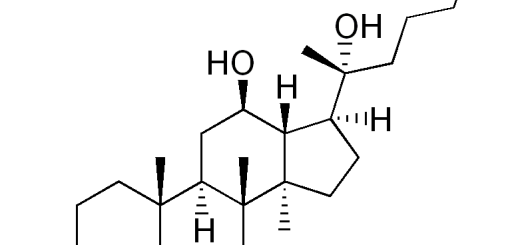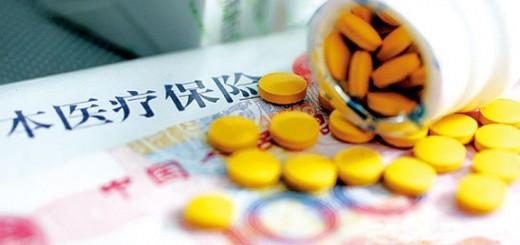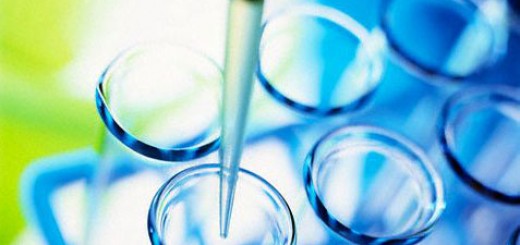| Share This Article
Research Frontiers of Medicinal Plants |
||
| DOWNLOAD |
|
人參達瑪烷皂苷Rb1能夠抑制炎症和降低腫瘤壞死因子α和白介素6釋放
炎症是眾多疾病的發病基礎。炎症可以是由病原菌感染誘發,但也可以是非感染因素引起的。在非感染性炎症中,常見的困擾人類的疾病包括類風濕性關節炎、結腸炎、各類骨關節及軟組織(肌腱、韌帶)炎症等。 在一項由韓國科研人員進行的研究中,發現人參達瑪烷皂苷Rb1及其代謝產物Compound K能夠有效地降低巨噬細胞(一種慢性炎症中最常見和最主要的炎症細胞)釋放炎症因子(腫瘤壞死因子 α和白介素 1β及白介素 6( IL-6 )。因此,人參達瑪烷皂苷Rb1可以發展成為一種治療非感染性炎症的新型藥物。 這個研究利用脂多醣(LPS )刺激的小鼠腹腔巨噬細胞,發現人參皂苷Rb1及其代謝產物compound K抑制了炎症反應中核轉錄因子κB ( NF-κB )的激活(NF-κB是炎症發生的關鍵因子),同時也有效抑制腫瘤壞死因子 -α,白細胞介素( IL) -1β和IL-6的表達。在2,4,6 –三硝基苯硫酸(TNBS )誘導的結腸炎小鼠,口服給予人參皂甙Rb1或compound K,能夠明顯抑制結腸的縮短和增厚,以及改善病理的宏觀評分。此外,與人參皂苷Rb1或Compound K對結腸髓過氧化物酶活性的抑制率達到84%和88%。基於這些發現,人參皂甙Rb1和Compound K可以用於炎性疾病(如結腸炎、類風濕性關節炎)的治療, 原文發表於:Biochem Pharmacol. 2011 Aug 1;82(3):278-86 Ginsenoside Rb1 and its metabolite compound K inhibit IRAK-1 activation–the key step of inflammation. Joh EH, Lee IA, Jung IH, Kim DH. Department of Life and Nanopharmaceutical Sciences, Kyung Hee University, Seoul 130-701, Republic of Korea. Abstract In the preliminary study, ginsenoside Rb1 , a main constituent of the root of Panax ginseng (family Araliaceae), and its metabolite compound K inhibited a key factor of inflammation, nuclear transcription factor κB (NF-κB) activation, in lipopolysaccharide (LPS) -stimulated murine peritoneal macrophage s. When ginsenoside Rb1 or compound K were orally administered to 2,4,6-trinitrobenzene sulfuric acid (TNBS)-induced colitic mice, these agents inhibited colon shortening, macroscopic score, and colonic thickening. Furthermore, treatment with ginsenoside Rb1 or compound K at 20mg/kg inhibited colonic myeloperoxidase activity by 84% and 88%, respectively, as compared with TNBS alone (p<0.05), and also potently inhibited the expression of tumor necrosis factor -α, interleukin (IL )-1β and IL-6 , but increased the expression of IL-10. Both ginsenoside Rb1 and compound K blocked the TNBS-induced expressions of COX-2 and iNOS and the activation of NF-κB in mice. When ginsenoside Rb1 or compound K was treated in LPS-induced murine peritoneal macrophage s, these agents potently inhibited the expression of the proinflammatory cytokines. Ginsenoside Rb1 and compound K also significantly inhibited the activation of interleukin -1 receptor-associated kinase-1 (IRAK-1), IKK -β, NF-κB, and MAP kinases (ERK, JNK, and p-38); however, interaction between LPS and Toll-like receptor-4, IRAK-4 activation and IRAK-2 activation were unaffected. Furthermore, compound K inhibited the production of proinflammatory cytokines more potently than did those of ginsenoside Rb1 . On the basis of these findings, ginsenoside s, particularly compounds K, could be used to treat inflammatory diseases, such as colitis , by targeting IRAK-1 activation. |








